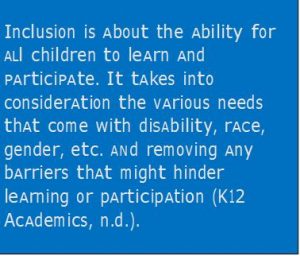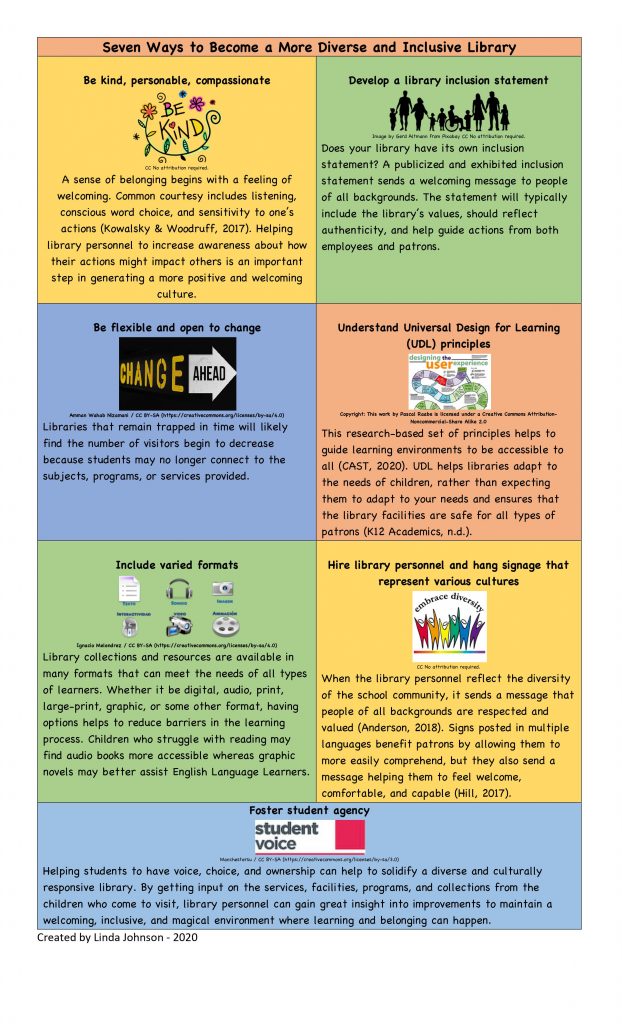Seven Ways to Become a More Diverse and Inclusive Library
“Something very magical happens in libraries where skilled and caring people who celebrate diversity are committed to truly inclusive practices.” – Adapted Richardson- Gibbs & Klein
One of the most pleasant feelings a person can have is to feel free and included. To participate independently and sense that others value your participation and appreciate your contributions can create a feeling of belonging and promote positive mental health. As the central meeting space and often one of the largest spaces in a school, the school’s library, Learning Commons, Center for Inquiry, Media Center, or whatever it may be called should be a place that promotes this sense of belonging. A school library has many considerations for its students’ needs, including lending policies, facilities, services, and resources (Subramaniam et al., 2012). Access is the key. As school librarians, it is our duty to be accessibility ambassadors and empower all students and staff who enter the doors.
 Schools today are tremendously diverse, and with this diversity comes individual differences in terms of norms, behaviors, and values (Foster, 2018). Cultural competence and responsiveness are essential for creating a sense of belonging in the library. Many blog posts have been written about diversity and inclusion in the classroom, but not about incorporating it into a school library. With these ideas in mind, I’ve outlined seven ways to become a more diverse and inclusive library.
Schools today are tremendously diverse, and with this diversity comes individual differences in terms of norms, behaviors, and values (Foster, 2018). Cultural competence and responsiveness are essential for creating a sense of belonging in the library. Many blog posts have been written about diversity and inclusion in the classroom, but not about incorporating it into a school library. With these ideas in mind, I’ve outlined seven ways to become a more diverse and inclusive library.

By Linda Johnson
Linda Johnson is a Middle Years Program Coordinator and teacher in the library. Passionate about supporting language and literacy development in students as well as diversity and inclusion in schools, she remains active in education as an educational consultant with the International Baccalaureate Educator Network. Linda trains and coaches teachers and school leaders in Texas, across the United States, and around the world to support the implementation of best practices, inquiry-based teaching, and student agency.
References
Anderson, A. (2018). 7 ways to create an inclusive classroom environment. Association for Supervision and Curriculum Development (ASCD). Retrieved from http://inservice.ascd.org/7-ways-to-create-an- inclusive-classroom-environment/
CAST. (2020, August 21). Until learning has no limits. CAST. http://www.cast.org/.
Foster, E. (2018) Cultural Competence in Library Instruction: A Reflective Practice Approach. Libraries and the Academy, 18 (3), 575–593. https://preprint.press.jhu.edu/portal/sites/ajm/files/18.3foster.pdf.
Hill, M. (2017). Creating a culturally diverse classroom. Association for Supervision and Curriculum Development (ASCD). Retrieved from http://inservice.ascd.org/creating-the-culturally-diverse- classroom/

